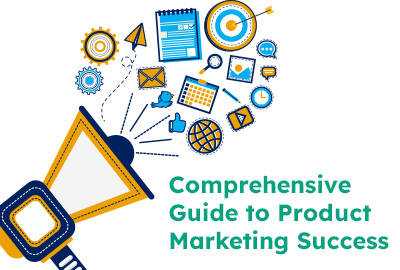Product-Market Fit and Customer Validation
Defining Product-Market Fit
Product-market fit occurs when a product meets the needs of a specific market segment. Achieving product-market fit is crucial for long-term success.
“Product-market fit means being in a good market with a product that can satisfy that market.” – Marc Andreessen
Steps to Achieve Product-Market Fit
Identify Target Market: Define your ideal customer segment.
- Understand Customer Needs: Conduct research to understand pain points and desires.
- Develop and Iterate: Build a product that addresses customer needs and continuously improve it based on feedback.
Example: Airbnb achieved product-market fit by iterating on their platform based on host and guest feedback.
Customer Feedback and Iteration
Collecting and analyzing customer feedback is essential for validating product-market fit. Use surveys, interviews, and analytics to gather insights.
Tools: SurveyMonkey, Typeform, Hotjar
Minimum Viable Product (MVP) Approach
An MVP allows you to test your product with minimal features, gather feedback, and make necessary improvements before a full-scale launch.
Example: Dropbox’s MVP was a simple video demonstrating the product’s functionality, which helped validate the concept before development.
Metrics to Measure Product-Market Fit
Key metrics include:
- Net Promoter Score (NPS): Measures customer satisfaction and loyalty.
- Customer Retention Rate: Indicates how well your product retains customers.
- Churn Rate: Measures the percentage of customers who stop using your product.
Case Studies of Achieving Product-Market Fit
Analyzing successful examples provides insights into the process and challenges of achieving product-market fit.
Example: Slack achieved product-market fit by focusing on team communication needs and continuously iterating based on user feedback.
Here is a comprehensive guide if you want to explore Product-Market Fit and Customer Validations.
Section 2:
Product Marketing Frameworks
Introduction to Product Marketing Frameworks
Product marketing frameworks provide a structured approach to marketing activities, ensuring consistency and effectiveness. Popular frameworks include the 4Ps (Product, Price, Place, Promotion) and the AIDA model (Attention, Interest, Desire, Action).
Customer-Centric Frameworks
Customer-centric frameworks focus on understanding and addressing customer needs. This approach leads to higher satisfaction and loyalty.
“Customer-centricity is the new marketing strategy.” – Steve Jobs
Examples: Jobs-to-be-Done (JTBD), Customer Value Proposition Canvas
Lean Product Framework
The lean product framework emphasizes iterative development and rapid experimentation to build products that meet market needs.
Steps:
- Build: Create a minimum viable product (MVP).
- Measure: Gather feedback and data.
- Learn: Use insights to improve the product.
Real-World Example: Slack used the lean framework to continuously improve its product based on user feedback.
SaaS Marketing Frameworks
SaaS products require unique marketing strategies due to their subscription-based model. Key elements include:
- Customer Acquisition: Attracting and converting leads.
- Customer Retention: Ensuring customers continue using the product.
- Upselling and Cross-Selling: Increasing revenue from existing customers.
Case Study: Salesforce uses a comprehensive SaaS marketing framework to drive growth and maintain customer loyalty.
The AARRR Framework (Pirate Metrics)
The AARRR framework (Acquisition, Activation, Retention, Revenue, Referral) is widely used in growth hacking. It focuses on optimizing each stage of the customer lifecycle.
Example: Dropbox used the AARRR framework to track and improve key metrics, leading to significant growth.
Case Studies of Effective Frameworks
Analyzing the application of different frameworks provides insights into their effectiveness and adaptability.
Example: HubSpot’s use of the inbound marketing framework has been instrumental in attracting and retaining customers through valuable content and personalized experiences.
Section 3:
Defining the North Star in Your Product Marketing
Understanding the North Star Metric
The North Star Metric (NSM) is a key performance indicator that reflects the core value your product delivers to customers. It guides strategic decisions and aligns teams.
“If you can’t measure it, you can’t manage it.” – Peter Drucker
Identifying Your North Star
Steps to find your North Star:
- Define Core Value: Identify the primary value your product provides.
- Measure Impact: Choose a metric that accurately reflects this value.
- Align Teams: Ensure all teams understand and focus on the NSM.
Real-World Example: Airbnb’s NSM is “nights booked,” reflecting the value of connecting hosts and guests.
Aligning Teams Around the North Star
Aligning teams ensures everyone works towards the same goal. Techniques include:
- Regular Communication: Keep teams informed and aligned.
- Shared Metrics: Use the NSM to measure performance across teams.
- Collaborative Planning: Involve all teams in strategic planning.
“Alone we can do so little; together we can do so much.” – Helen Keller
Tracking and Measuring Progress
Use tools to track progress towards the NSM and adjust strategies as needed.
Tools: OKRs (Objectives and Key Results), Dashboards, Analytics platforms
Case Studies of North Star Metrics
Analyzing successful examples provides insights into how companies use NSMs to drive growth.
Example: Slack’s NSM is “daily active users,” reflecting the value of user engagement and retention.
Read this article for a detailed understanding of “Defining the North Star in Your Product Marketing“.
Section 4:
The Power of Visual Identity in Product Marketing
Importance of Visual Identity
Visual identity encompasses all visual elements of your brand, including logo, color scheme, typography, and imagery. It plays a crucial role in creating a memorable and recognizable brand.
“Design is the silent ambassador of your brand.” – Paul Rand
Key Elements of Visual Identity
- Logo: The face of your brand.
- Color Scheme: Conveys brand personality and evokes emotions.
- Typography: Sets the tone and style of your communication.
- Imagery: Visuals that represent your brand values and message.
Creating a Cohesive Visual Identity
Ensure consistency across all brand touchpoints to build a strong and cohesive visual identity.
Example: Coca-Cola’s consistent use of red and white reinforces its brand identity.
Impact on Brand Perception
A strong visual identity enhances brand perception and recognition, influencing customer decisions.
Case Study: Apple’s sleek and minimalist design aesthetic reinforces its brand image of innovation and premium quality.
Visual Identity Guidelines
Create guidelines to maintain consistency in visual identity across all marketing materials.
- Tools: Adobe Creative Suite, Canva
- Leveraging Visual Content in Marketing
- Visual content, including images, videos, and infographics, is more engaging and shareable than text alone.
Example: Instagram and Pinterest are platforms where visual content thrives.
Case Studies of Successful Visual Identities
Analyzing successful visual identities provides inspiration and best practices.
Example: Nike’s “swoosh” logo and bold use of black and white imagery convey strength and athleticism, reinforcing its brand identity.
Section 5:
Go-To-Market Strategies for Product Launches
Market Research Techniques
Market research is the foundation of any successful product launch. Understanding your market, identifying opportunities, and knowing your customers’ needs are essential steps in creating a product that resonates. Techniques like surveys, focus groups, and competitive analysis can provide valuable insights.
“The aim of marketing is to know and understand the customer so well the product or service fits him and sells itself.” – Peter Drucker
Surveys can be conducted online using tools like SurveyMonkey, allowing you to gather quantitative data quickly. Focus groups, on the other hand, offer qualitative insights through direct interaction with potential customers. Competitive analysis involves studying your competitors to understand their strengths and weaknesses, helping you position your product effectively.
Building a Unique Value Proposition
A Unique Value Proposition (UVP) is what sets your product apart from the competition. It answers the question: Why should customers choose your product over others?
To build a compelling UVP, focus on:
- Clarity: Clearly articulate what makes your product unique.
- Relevance: Ensure your UVP addresses the specific needs and desires of your target audience.
- Differentiation: Highlight features or benefits that competitors don’t offer.
Example: Dollar Shave Club’s UVP, “A great shave for a few bucks a month,” effectively communicates affordability and convenience.
Product Positioning Strategies
Product positioning involves creating a distinct image and perception of your product in the minds of your target audience. This can be achieved through positioning maps and competitor analysis.
Techniques:
- Positioning Maps: Visual tools that help identify your product’s position relative to competitors based on various attributes.
- Competitor Analysis: Understanding competitors’ positioning to find gaps and opportunities for differentiation.
- Case Study: Apple positioned the iPhone as a premium, innovative smartphone, setting it apart from other mobile devices through sleek design and advanced technology.
Launch Planning
A successful product launch requires meticulous planning and execution. Key components include:
- Timeline and Milestones: Outline key dates and deliverables leading up to the launch.
- Marketing Channels: Identify the channels (e.g., social media, email, PR) to promote the product.
- Content Strategy: Develop content that educates and excites your audience.
Example: Tesla’s Model 3 launch involved a comprehensive plan, including a live unveiling event, pre-orders, and continuous updates to build anticipation.
Pricing Strategies
Pricing your product correctly is crucial for market success. Different pricing models include:
- Cost-Plus Pricing: Adding a markup to the cost of production.
- Value-Based Pricing: Setting a price based on the perceived value to the customer.
- Competitive Pricing: Setting prices based on competitors’ pricing.
“Pricing is the moment of truth – all of marketing comes to focus in the pricing decision.” – Raymond Corey
Competitive Analysis
Understanding your competitors is essential for crafting effective strategies. Competitive analysis tools like SWOT (Strengths, Weaknesses, Opportunities, Threats) can provide valuable insights.
Example: Netflix constantly analyzes competitors in the streaming industry to adjust its content strategy and stay ahead.
Case Studies of Successful Product Launches
Analyzing successful product launches can provide valuable lessons and best practices.
Example: Dropbox’s launch strategy involved a viral referral program that significantly boosted user acquisition. By offering additional storage space for referrals, Dropbox encouraged users to spread the word, leading to exponential growth.
Here is a Comprehensive Guide of Go-To-Market Strategies for Product Launches. Here you will find more depth with real life examples. Put down your comments if you have more questions.
Section 6:
Performance Marketing for Product Growth
Setting Up Performance Campaigns
Performance marketing focuses on driving measurable results through targeted campaigns. Key steps include:
- Goal Setting: Define clear objectives (e.g., increase sign-ups, boost sales).
- Channel Selection: Choose the right marketing channels (e.g., Google Ads, Facebook Ads).
- Budget Allocation: Allocate budget based on expected ROI.
- Tools: Google Ads, Facebook Ads, LinkedIn Ads
Key Metrics and KPIs
Tracking the right metrics is crucial for measuring success. Key performance indicators (KPIs) include:
- Customer Acquisition Cost (CAC): The cost of acquiring a new customer.
- Lifetime Value (LTV): The total revenue a customer generates over their lifetime.
- Return on Investment (ROI): The profitability of your campaigns.
“What gets measured gets managed.” – Peter Drucker
Optimizing Paid Advertising Campaigns
To maximize ROI, continuously optimize your campaigns through A/B testing, targeting, and ad creatives.
Example: Dropbox optimized its ad campaigns by testing different ad copies and targeting strategies, resulting in higher conversion rates.
A/B Testing and Experimentation
A/B testing involves comparing two versions of a campaign element to see which performs better. This helps in making data-driven decisions.
Case Study: Airbnb used A/B testing to optimize their landing pages, resulting in increased bookings and improved user experience.
Leveraging Influencer Marketing
Influencer marketing can amplify your reach and credibility. Choose influencers whose audience aligns with your target market.
Example: Nike’s collaboration with athletes and fitness influencers has been instrumental in promoting their products and enhancing brand image.
Retargeting Strategies
Retargeting involves displaying ads to users who have previously interacted with your website or app, increasing the chances of conversion.
Example: Amazon’s retargeting strategy effectively reminds customers of products they viewed but didn’t purchase, driving higher conversion rates.
Case Studies of High-ROI Campaigns
Analyzing campaigns with high ROI provides insights into successful strategies and tactics.
Example: A travel company increased its ROI by implementing a multi-channel retargeting campaign that included email, social media, and display ads.
Section 7:
Omnichannel Marketing Automation
Choosing the Right Marketing Automation Tools
Marketing automation streamlines repetitive tasks and enhances efficiency. Key features to look for include:
- Lead Scoring: Prioritize leads based on engagement.
- Workflow Automation: Automate email campaigns and social media posts.
- Analytics: Track performance and gain insights.
Examples: HubSpot, Marketo, Pardot
Creating an Omnichannel Strategy
An omnichannel strategy ensures a seamless customer experience across all touchpoints. Steps to create an effective strategy include:
- Customer Journey Mapping: Understand how customers interact with your brand.
- Consistent Messaging: Maintain consistent branding and messaging across channels.
- Integration: Integrate all channels and data for a unified view.
“Omnichannel isn’t just a trend, it’s the way customers expect to interact with your brand.” – Michelle Beeson
Customer Journey Mapping
Customer journey mapping helps you visualize the steps customers take from awareness to purchase and beyond. This understanding allows for better targeting and personalization.
Example: Starbucks uses customer journey mapping to enhance the in-store and digital experience, ensuring a consistent and personalized interaction.
Email Marketing Automation
Email marketing automation allows for personalized and timely communication with customers. Best practices include:
- Segmentation: Group your audience based on behavior, interests, and demographics.
- Personalization: Use dynamic content to personalize emails.
- Triggered Emails: Automate emails based on user actions (e.g., abandoned cart reminders).
- Tools: Mailchimp, ActiveCampaign
Social Media Automation
Automating social media posts saves time and ensures consistent engagement. Tools like Hootsuite and Buffer allow you to schedule posts, monitor mentions, and analyze performance.
Example: Hootsuite uses social media automation to manage multiple accounts and engage with their audience effectively.
Personalization at Scale
Personalization improves customer experience and increases engagement. Use data and automation to personalize content at scale.
“Personalization is not a trend, it’s a marketing tsunami.” – Avi Dan
Case Studies of Omnichannel Success
Analyzing successful omnichannel strategies provides valuable insights and best practices.
Example: Sephora’s omnichannel strategy integrates online and offline experiences, allowing customers to seamlessly transition between the two. This includes features like in-store tablets for product reviews, personalized recommendations, and a mobile app for booking beauty services.
We have compiled a list of advanced Product Marketing Strategies for you. Here you can explore advanced approaches pro-marketers take for Product marketing success.
Section 8:
Content Strategies for Product Marketing
Importance of Content in Product Marketing
Content is a powerful tool for educating, engaging, and converting customers. A well-crafted content strategy can significantly impact your product marketing efforts.
“Content is king, but engagement is queen, and the lady rules the house!” – Mari Smith
Types of Content
- Blog Posts: Educate and inform your audience on relevant topics.
- Case Studies: Showcase success stories and real-world applications.
- Whitepapers and eBooks: Provide in-depth insights and research.
- Videos and Webinars: Engage and educate through visual and interactive content.
- Infographics: Simplify complex information into visual format.
Creating a Content Calendar
A content calendar helps in planning and organizing your content efforts. Include key dates, topics, and distribution channels.
Tools: Trello, Asana, CoSchedule
SEO Best Practices
Optimizing your content for search engines increases visibility and organic traffic. Key practices include:
- Keyword Research: Identify and use relevant keywords.
- On-Page SEO: Optimize titles, meta descriptions, and headers.
- Backlinking: Earn quality backlinks to improve authority.
Example: HubSpot’s blog uses SEO best practices to attract and engage a large audience.
Leveraging User-Generated Content
User-generated content (UGC) builds trust and authenticity. Encourage customers to share reviews, testimonials, and social media posts.
Example: GoPro effectively leverages UGC by encouraging users to share their adventure videos, creating a community of engaged customers.
Measuring Content Performance
Track key metrics to evaluate the success of your content strategy, such as:
- Traffic: Number of visitors to your content.
- Engagement: Time spent on page, social shares, comments.
- Conversions: Leads or sales generated from content.
Case Studies of Successful Content Strategies
Analyzing successful content strategies provides valuable insights and inspiration.
Example: Buffer’s blog strategy focuses on creating high-quality, educational content, leading to increased traffic and brand authority.
Section 9:
Marketing Analytics and Data-Driven Decision Making
Importance of Marketing Analytics
Marketing analytics involves measuring and analyzing data to improve marketing performance and decision-making. It provides insights into customer behavior, campaign effectiveness, and ROI.
“Without data, you’re just another person with an opinion.” – W. Edwards Deming
Key Metrics to Track
- Traffic and Engagement: Website visits, bounce rate, time on page.
- Conversion Rates: Percentage of visitors converting into leads or customers.
- Customer Acquisition Cost (CAC): Cost to acquire a new customer.
- Lifetime Value (LTV): Total revenue generated by a customer over their lifetime.
Tools for Marketing Analytics
Popular tools for tracking and analyzing marketing data include:
- Google Analytics: Comprehensive web analytics.
- Mixpanel: Product and user analytics.
- Tableau: Data visualization and business intelligence.
Creating Dashboards for Data Visualization
Dashboards provide a visual representation of key metrics and KPIs, making it easier to monitor performance and identify trends.
Example: HubSpot’s analytics dashboard allows marketers to track key metrics in real-time.
Data-Driven Decision Making
Using data to inform decisions leads to more effective and efficient marketing strategies. Steps include:
- Collect Data: Gather data from various sources.
- Analyze Data: Identify patterns and insights.
- Implement Changes: Make informed adjustments to your strategies.
Case Studies of Data-Driven Success
Analyzing successful data-driven marketing strategies provides valuable lessons and best practices.
Example: Netflix uses data-driven decision making to personalize content recommendations, resulting in higher user satisfaction and retention.
Section 10:
Popular Brand Case Studies (Global)
Apple’s Product Launches
Apple’s product launches are legendary for creating buzz and excitement. Key strategies include secrecy, anticipation, and high-profile events.
“People don’t know what they want until you show it to them.” – Steve Jobs
Lessons from Apple’s Launches:
- Build Anticipation: Use teasers and leaks to generate excitement.
- High-Quality Presentation: Ensure the launch event is polished and professional.
- Strong Narrative: Tell a compelling story about the product.
Coca-Cola’s Branding Evolution
Coca-Cola’s branding has evolved over decades while maintaining consistency. Key strategies include memorable campaigns, consistent messaging, and global appeal.
Real-World Example: Coca-Cola’s “Share a Coke” campaign personalized bottles with popular names, increasing sales and engagement.
Nike’s Customer Engagement
Nike’s marketing focuses on customer engagement through inspirational messaging and strong brand associations.
“Just do it.” – Nike
Key Strategies:
- Athlete Endorsements: Partner with influential athletes.
- Emotional Appeal: Create campaigns that resonate emotionally.
- Community Building: Foster a sense of community among customers.
Tesla’s Disruptive Marketing
Tesla disrupts the automotive market with innovative products and unconventional marketing strategies.
Key Strategies:
- Direct Sales Model: Bypass traditional dealerships.
- Referral Programs: Encourage customers to refer friends.
- Viral Marketing: Use social media and word-of-mouth to spread the word.
Amazon’s Customer-Centric Approach
Amazon’s focus on customer satisfaction drives its marketing strategy.
“We’re not competitor obsessed, we’re customer obsessed. We start with what the customer needs and we work backwards.” – Jeff Bezos
Key Strategies:
- Personalized Recommendations: Use data to tailor suggestions.
- Customer Reviews: Highlight user feedback.
- Prime Membership: Offer benefits to enhance loyalty.
Spotify’s Personalized Marketing
Spotify personalizes the user experience through data-driven recommendations and curated playlists.
Real-World Example: Spotify’s Discover Weekly playlist uses algorithms to suggest new music based on user preferences.
Case Studies of Lesser-Known Brands
Analyzing emerging brands provides insights into innovative strategies and best practices.
Example: Glossier, a beauty brand, uses customer feedback and social media to build a community and drive growth.
Key Takeaway:
Product marketing is a multifaceted discipline that requires a strategic approach and a deep understanding of your market and customers. By implementing the strategies and best practices outlined in this guide, you can enhance your product marketing efforts and achieve lasting success. Remember, the key to effective product marketing lies in continuous learning, experimentation, and adaptation. Stay agile, stay informed, and most importantly, stay customer-centric.
Have an interesting product and need support in devising complete Go-To-Market Strategy, Contact us!





0 Comments